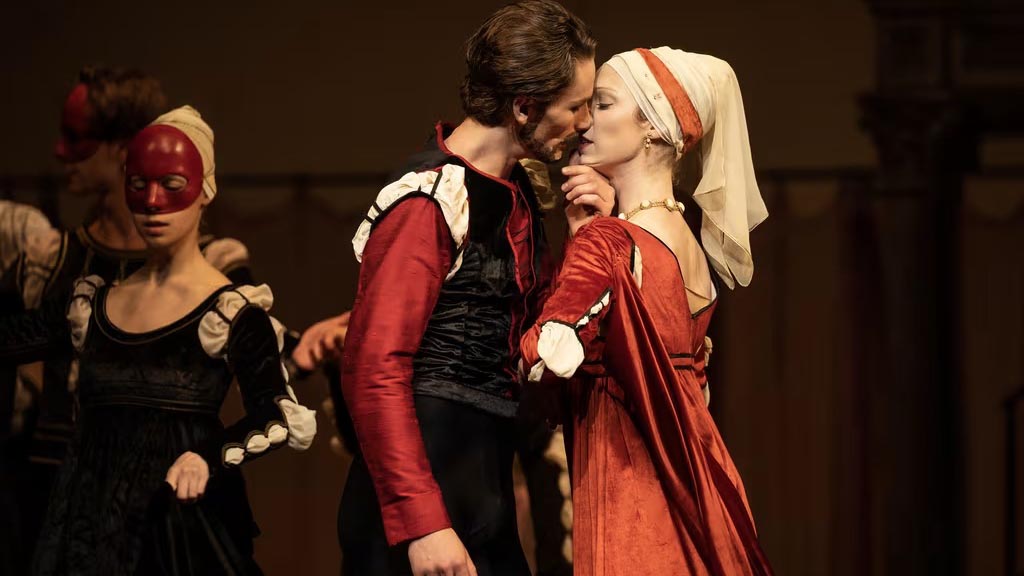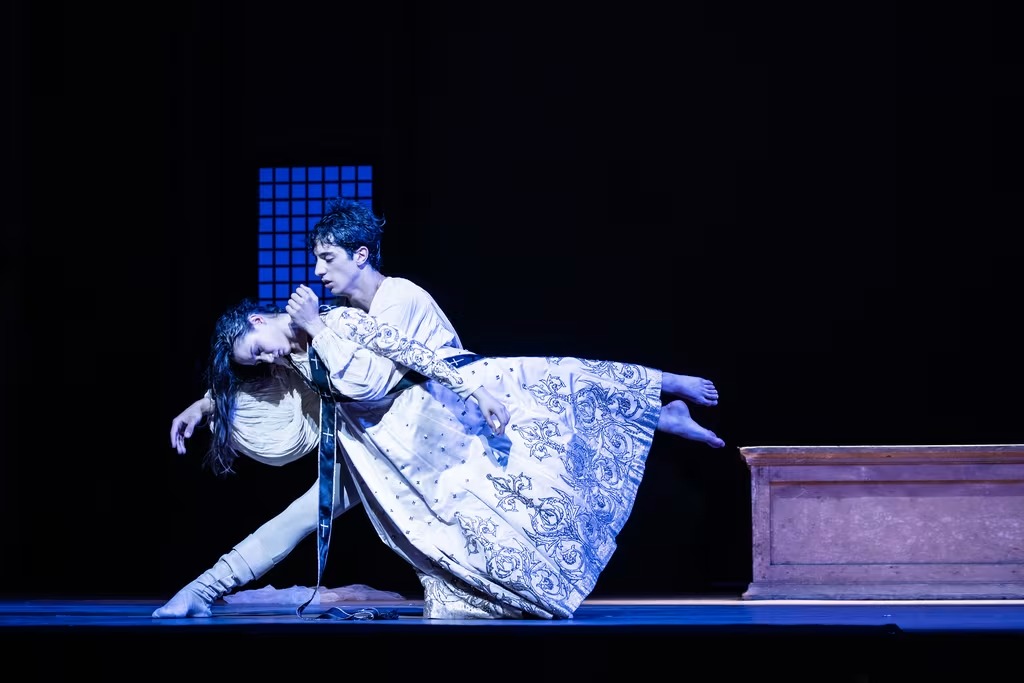
The Teatro La Fenice presents John Neumeier’s ballet Romeo and Juliet, a debut that reaffirms the long-standing friendship between the renowned Hamburg Ballet and the historic Venetian stage.
This Romeo and Juliet begins in 1935, when Sergei Prokofiev composed it. The premiere at the Bolshoi Theatre was canceled, as the dancers found this innovative and seemingly sharp music too challenging. Among the critics, alas, was also Pasternak. It was quietly staged in 1938 in Brno, Czechoslovakia, but its subsequent revival at the Kirov Theatre – now the Mariinsky Theatre – in St. Petersburg was a triumph. This was largely thanks to prima ballerina Galina Ulanova, whose interpretation we have preserved in a 1954 film. An important note: this ballet is a theatrical play expressed through dance. Pay close attention to Juliet’s entrance, still a child, moving incredibly fast, light as a feather, with quick half-point steps to music in a bright major key featuring dazzling virtuosity. Or consider the encounter between the Capulets and Montagues, portrayed through a rhythmic dance evoking power, weaponry, and strength—a kind of rewritten sarabande with innovative, almost jazz-like chords.

The music surprisingly combines various stylistic elements, from Gregorian chant to Romantic music, from Latin American rhythms (Mercutio) to ragtime. A key point to note is the deliberate effort to assign each main character their own leitmotif. The dancers are compelled to abandon standard ballet steps to convey theatrical situations. The first choreographer, Lavrovsky, focused heavily on the scenic aspect, studying Italian Renaissance painters at the Hermitage. Subsequent choreographies have remained faithful to the fundamental principles of inspiration, except for downplaying the theme of social concerns—important to the Soviet regime of the time—in favor of highlighting the protagonists’ passionate love and dramatic fate. Notable are the historic choreographies by John Cranko, including a performance in Venice at the Teatro Verde in 1958 with Carla Fracci; by Kenneth MacMillan in 1965 with Margot Fonteyn and Rudolf Nureyev; and by Nureyev himself, who thrilled audiences at La Scala with Carla Fracci in 1980.
John Neumeier is one of the last heirs of the classical tradition. A solo dancer in Stuttgart under Cranko and later in Frankfurt until 1973, he created his first choreography of Romeo and Juliet in 1971. He then took over as director of the Hamburg Ballet, a position he has held continuously to this day.

His current version, on stage at Teatro La Fenice from January 15 to 19, blends all the classic elements while enriching them with masterful use of lighting and costumes that at times depart from historical styles, opting for stunning and meaningful black-and-white designs or splashes of scarlet red. The theatrical essence of the characters is certainly not overlooked, and the choreographic performance retains a powerful visual impact.
If I had the chance to meet John Neumeier, I would like to ask him about his favorite movie, and I am certain he would mention West Side Story.